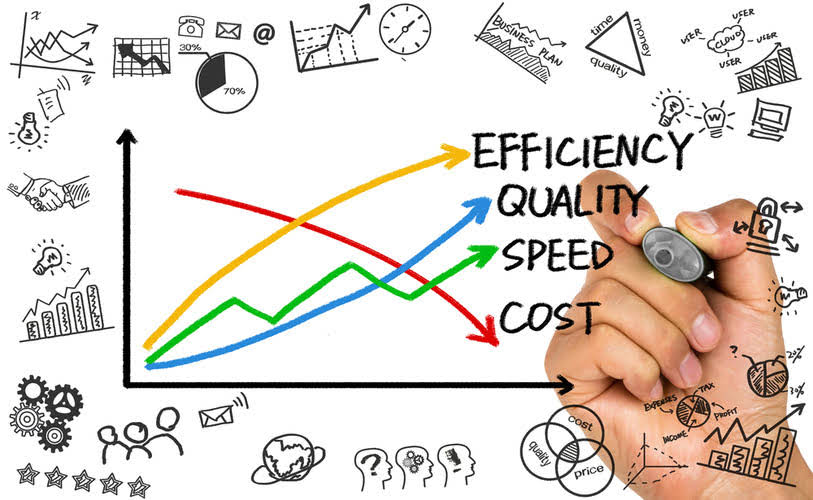Content

Molly has to repay the government loan received to start her business. Molly obtained a loan from the bank specifically to help finance the purchase of her retail store. For example, if the bond’s purchase price is $100,000 but the principal amount to be repaid is $125,000, then the investor purchased the bond at a discount.

Debentures pay a fixed coupon rate and are redeemable on a fixed date. In some countries, the term debenture is used interchangeably with bonds. There are some convertible debentures, which can be converted into equity shares after a certain period. Non-convertible debentures cannot be converted into equity shares and carry a higher interest rate as compared to convertible debentures.
What Are Current And Long
Learn financial modeling and valuation in Excel the easy way, with step-by-step training. Mortgages – These are loans that are backed by a specific piece of real estate, such as land and buildings. The process repeats until year 5 when the company has only $100,000 left under the current portion of LTD. In year 6, there are no current or non-current portions of the loan remaining.
Analyzing long-term liabilities is done for assessing the likelihood the long-term liability’s terms will be met by the borrower. After analyzing long-term liabilities, an analyst should have a reasonable basis for a determining a company’s financial strength.
Debt To Equity Ratio:
Long-term liabilities consist of outstanding debt against long-term assets and may have a term of 20 or more years. Interest and principal payments due within the coming year on this debt are included in current liabilities.

The ratio is calculated by dividing the value of the organization’s fixed assets by the value of its long-term debts. A deferred tax liability occurs when the tax payment liability is accumulated in the current accounting period but is due only in the later accounting cycle. Such liability arises when the approaches followed by business differ from that of the government agencies responsible for tax collection. It should be noted that the recording of deferred tax liabilities is recorded only when the event’s happening is certain; else it may only be recorded as a footnote.
The Debt To Capital Ratio
Note that a long-term loan’s balance is separated out from the payments that need to be made on it in the current year. She plans on paying off the laptop in the near future, probably within the next 3 months.
What are the 4 types of liabilities?
There are mainly four types of liabilities in a business; current liabilities, non-current liabilities, contingent liabilities & capital.
A capital lease is listed as an expense on the income statement. A capital lease is listed as a liability on the income statement. Although the explanation of a pension sounds simple, it’s a complicated process, and there are many important factors to consider when accounting for pensions. In order for an employee to be eligible for pension benefits, they must be vested. The vested benefits are listed as a long-term liability on the balance sheet. However, if the bond purchase price is $150,000 but the principal amount to be repaid is $135,000, the investor purchased the bond at a premium. In sum, premium means purchasing the bond at a greater value than the principal.
How Business Liabilities Work
AP can include services,raw materials, office supplies, or any other categories of products and services where no promissory note is issued. Since most companies do not pay for goods and services as they are acquired, AP is equivalent to a stack of bills waiting to be paid.
- Current liabilities are obligations that are due within a year, while long-term liabilities come due in more than a year.
- It should be noted that the recording of deferred tax liabilities is recorded only when the event’s happening is certain; else it may only be recorded as a footnote.
- Because a bond typically covers many years, the majority of a bond payable is long term.
- A net worth statement using the market valuation method measures the „solvency“ of the business.
- Long-term LiabilitiesLong Term Liabilities, also known as Non-Current Liabilities, refer to a Company’s financial obligations that are due for over a year .
- What is considered an acceptable ratio of equity to liabilities is heavily dependent on the particular company and the industry it operates in.
Other companies, such as those in the IT sector, don’t often need to spend a significant amount of money on assets, and so more often finance operations through equity. More specifically, liabilities are subtracted from total assets to arrive at a company’s equity value. Examples would be mortgages, rent on property, pension obligations, auto loans, and any other large expense that is paid over the course of multiple years. You can use the current ratio, debt-to-equity ratio, and debt-to-asset ratio to determine whether your liabilities are manageable or need to be lowered. The debt-to-asset ratio is another solvency ratio, measuring the total debt (both long-term and short-term) relative to the total business assets. It tells you if you have enough assets to sell to pay off your debt, if necessary.
The Main Focus Points When Analyzing A Balance Sheet
Special Purpose VehiclesA Special Purpose Vehicle is a separate legal entity created by a company for a single, well-defined, and specific lawful purpose. It also serves as the main parent company’s bankruptcy-remote and has its own assets and liabilities. Working capital, or net working capital , is a measure of a company’s liquidity, operational efficiency, and short-term financial health. Companies take on liabilities to increase their capital in order to finance operations or projects. What is considered an acceptable ratio of equity to liabilities is heavily dependent on the particular company and the industry it operates in. High-performing capital goods companies, for example, have a debt-to-equity ratio of slightly over 1; less capital-intensive industries, such as technology, more commonly have a ratio of around 0.60.
A long-term liability is an obligation arising from a transaction. Long term liabilities are also called non-current liabilities because the debts are due for repayment only in the following operating cycle of the business. Long term liabilities are a critical component of a company’s long term financing long term liability example decision. Long-term liabilities are usually taken up by the business for purchasing capital assets, financing new projects, or tapping growth and expansion opportunities. It is of utmost essence that companies repay their long term debts, and in time else, they would enter a solvency crisis.
Bank Debt – This is any loan issued by a bank or other financial institution and is not tradable or transferable the way bonds are. However, if the lawsuit is not successful, then no liability would arise. In accounting standards, a contingent liability is only recorded if the liability is probable (defined as more than 50% likely to happen). The amount of the resulting liability can be reasonably estimated. Are liabilities that may occur, depending on the outcome of a future event. For example, when a company is facing a lawsuit of $100,000, the company would incur a liability if the lawsuit proves successful. Long-term liabilities are crucial in determining a company’s long-term solvency.
See the example of public sector undertakings & banks. They have created jobs but liability to tax payers. Poor will suffer more.
Cost cutting is essential to improve operational efficiency & sustainability in long term.
— Ravi ರವಿ (@RaviCArsikere) November 27, 2021
She decides to visit her former college professor for some help. He tells her she should include in her presentation some of the more purposeful long-term liabilities, such as bonds, pensions, long-term leases and mortgages. This jogs Jan’s memory, and she starts preparing for the seminar.
Liability
This article provides more details and helps you calculate these ratios. When an investor purchases the bond at a value less than the principal, the bond is considered sold at a discount. The total amount of a capital lease is recorded as a long-term asset on your balance sheet but the amount is also recorded as a long-term liability as well. However, the monthly principal and interest payments due are considered currently liabilities and are recorded as such on the balance sheet. Mortgages are considered a long-term liability and are recorded as mortgage payable on the balance sheet. Some common examples of notes payable could be the purchase of a company car or a loan from a bank.
Assets are often divided into three categories; current, intermediate and long term. In some situations the intermediate and long-term asset categories are combined into one category called „fixed assets“.
Liability-Driven Investing & Risk Mitigation – Pensions & Investments
Liability-Driven Investing & Risk Mitigation.
Posted: Mon, 29 Nov 2021 05:01:01 GMT [source]
Ideally, the ratio of your current assets to your current liabilities should remain between 1.2 to 2. For example, taking on short-term debt to fund growth can be a net positive. For more information, you can read our guides on the current ratio and the quick ratio. Unearned revenue is a current liability that represents cash received in advance from customers before providing the goods or services. This is typically a prepayment for something that a company is expected to produce within one year or less. One example for this is a gift check or gift card, which was purchased in advance before the goods or services are delivered.

However, if a company does not file on it’s 10-Q/K either current portion or non current portion of debt, we will not list a value. An example of an expense would be your monthly business cell phone bill. But if you’re locked into a contract and you need to pay a cancellation fee to get out of it, this fee would be listed as a liability. Small Business Administration has a guide to help you figure out if you need to collect sales tax, what to do if you’re an online business and how to get a sales tax permit. Although average debt ratios vary widely by industry, if you have a debt ratio of 40% or lower, you’re probably in the clear. If you have a debt ratio of 60% or higher, investors and lenders might see that as a sign that your business has too much debt. If you’ve promised to pay someone a sum of money in the future and haven’t paid them yet, that’s a liability.
Author: David Ringstrom
